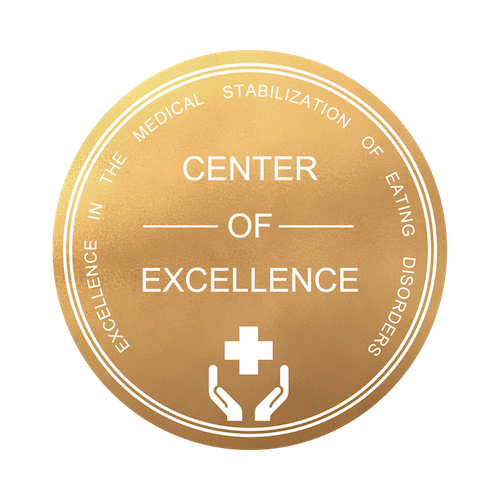Eating Disorder Recovery in the LGBTQ+ Community
Approaching Recovery as an LGBTQ+ Person
LGBTQ+ individuals are at an increased risk of eating disorders like anorexia nervosa, bulimia nervosa and binge eating disorder. They may also find recovery especially difficult as they may experience a diminished support system, increased stress from lack of support and acceptance of their identity, greater barriers to care and difficulty finding LGBTQ-competent providers.
Here are some of the ways to navigate recovery and find support as a member of the LGBTQ community.
Surround Yourself with Love
Many individuals in the LGBTQ+ find themselves isolated from their families, loved ones or communities, and are forced to find a new support system. Found families (families of choice) are one of the many ways LGBTQ+ individuals have built vibrant, diverse and supportive communities. If you have been put in a position where you need to choose your family, it’s important to remember that you are not alone. Many LGBTQ+ people have gone through similar lived experiences and are waiting with open arms and a willingness to guide you through this difficult time.
While circumstances may force you to be around those who are unaccepting or critical of your identity, it’s critical to have at least some individuals in your life you can turn to for support and comfort. Shame and guilt can both exacerbate disordered eating, so having moments where you’re able to let go of these feelings in supportive company are vital.
Deepen Your Connections in the Larger LGBTQ+ Community
Many people find building quality connections within the LGBTQ+ community helps them with their recovery. A sense of community has been linked to increased wellbeing, including combating isolation, heightening confidence and increasing self-esteem in members of the LGBTQ+ community.2 Getting involved digitally or locally in LGBTQ+ spaces is an opportunity to share experiences and history, give back to the community, participate in charity work, build resources and advocate on behalf of the LGBTQ+ community.
Find Affirming Religious Communities
Religion can be difficult to navigate as a member of the LGBTQ+ community, but there are established and budding LGBTQ-affirming religious organizations across the country. For some, exploring their faith is a vital aspect to navigating life, their identity as well as their recovery journey. If you’re interested in finding a supportive religious community, Human Rights Campaign has compiled a list of affirming faith resources and groups, including Christianity, Judaism, Islam, other faiths and interfaith organizations.
Participate in Activities That Bring You Joy
Maybe you want to also explore communities that aren’t adjacent to the LGBTQ+ community. Becoming active in your favorite pastimes is another way to bring joy and community into your life. Your involvement should be something that helps alleviate stress and is enjoyable, not a burden. Here are some popular activities to get you started:
- Sports leagues and hiking clubs
- Gardening clubs and community garden plots
- Art classes, theater groups and crafting clubs
- Book clubs
Practice Self-Compassion
Self-compassion is the ongoing practice of relating to yourself kindly and fairly. There are many times where you might catch yourself speaking or thinking of yourself more harshly than anyone else. But often this lack of self-compassion is unproductive. Being overly critical of yourself can create a barrier to growth, happiness and recovery. It prolongs stress and suffering and can create a downward spiral back into the problematic coping mechanisms. It’s important that you don’t kick yourself when you’re down, understand that your struggles aren’t unique, acknowledge how you feel and foster an environment for growth.
Don’t Be Afraid to Re-Enter Treatment
Reentering treatment can be a difficult decision to make. Maybe you’re afraid of explaining an absence from school or work or have familial obligations like caring for a parent or child. But you can’t pour from an empty cup. While work, school and family are important, so is your health.
It is also very easy to set expectations for yourself and become judgmental when you’re unable to live up to them, especially if you’re comparing your recovery to journey to others’. Remember that recovery journeys are not linear and it’s common to have lapses in recovery or to need to re-enter medical stabilization or residential treatment.
Oftentimes it’s better to reenter treatment than try to muscle through it all by yourself. Re-entering treatment is not failing, but rather is a sign that you are committed to your long-term health and wellbeing.
LGBTQ+ Healthcare at ACUTE
ACUTE Center for Eating Disorders and Severe Malnutrition offers identity-affirming care to all patients ages 15 and older. We also have access to specialty consults across the Denver Health hospital system, including LGBTQ+ Health Services.
Seek Out LGBTQ+ Health Services
Members of the LGBTQ+ community have a variety of healthcare needs. LGBTQ+ health networks, services and clinics provide affirming care that addresses the specific health disparities and needs of the LGBTQ+ community. If you’re looking for LGBTQ+ health services in your state, the Center for Disease Control and Prevention (CDC) offers a list of resources by state to get you started.
References
-
Watson, R.J., Veale, J.F., Saewyc, E.M. (2017). Disordered Eating Behaviors Among Transgender Youth: Probability Profiles from Risk and Protective Factors. International Journal of Eating Disorders, 50(5), 515-522.
-
Sense of Community “Important” to LGBT People, Sheffield Hallam University
Last Reviewed: March 2024 by Casey Shamy, LSW
